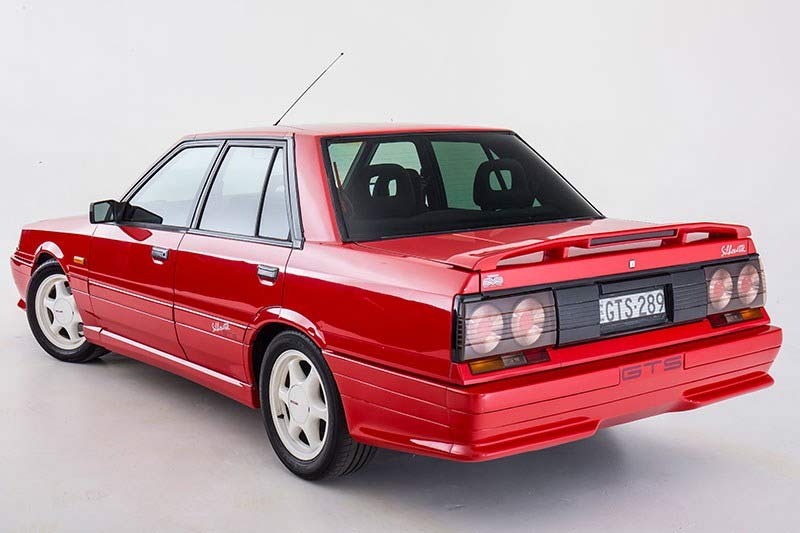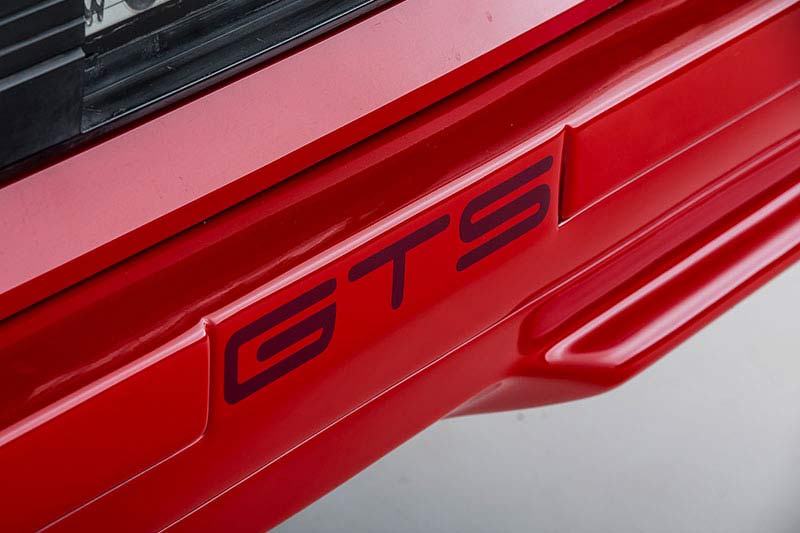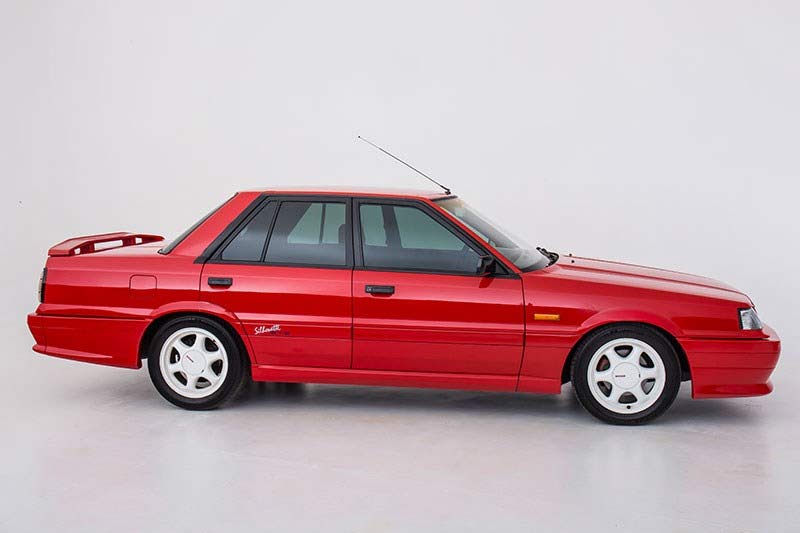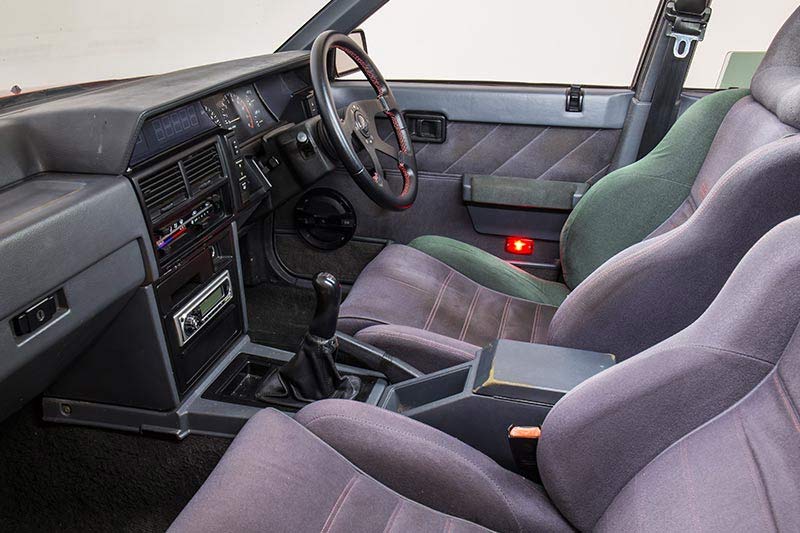1986-1991 Nissan Skyline R31 - Buyer's Guide



|
Nissan Australia's decision in the 1980s to muscle-in on the six-cylinder market dominated by Falcon and Commodore resulted in the local manufacture of a version of the R31 Skyline.
There would be no coupe or four-door hardtop for Australia, only the conventional sedan and wagon. To keep costs down and durability up, the Japanese Skyline’s coil-sprung independent rear suspension was binned in favour of an Australian-made Borg Warner live axle.

The powerplant was Nissan's new RB30E 3.0-litre, single cam, EFI, inline six-cylinder engine. It provided the torquey low-down response that Aussie drivers wanted as well as suiting the new-for-’86 unleaded petrol. The 3.0-litre engine was standard in all GX and GXE sedans and wagons and the luxury sedan-only Ti and sports-pack Silhouette. It offered 117kW and 252Nm with either a five-speed manual or four-speed auto transmission and all Skylines were well-equipped for the time with four-wheel discs and power steering. Wheels were 14s on lower-spec cars and 15s on the Ti and Silhouette.
| Read next: Nissan Skyline R31 Silhouette - club classics around $30k
In mid-1988 Nissan's Special Vehicles Division (SVD) added an enhanced performance version to the Skyline range – the SVD Skyline Silhouette GTS. The GTS was available as auto or manual but in white only and received several mechanical and handling upgrades to create a ‘club sport’ type vehicle. The engine was tweaked with a locally installed camshaft and extractors to lift power to 130kW at 5500rpm and torque to 255 Nm. Peak power and torque arrived 300rpm higher in the rev range, giving the engine an extra keenness for revs.

The GTS also had thicker sway bars, Bilstein dampers and larger 274mm front brakes. It all worked with 16x7-inch alloys and 215/55 tyres with the driver sitting on locally-made Scheel seats and holding a Momo wheel.
Nissan SVD launched a second GTS in mid-’89. This time the car was presented in a far more extroverted Beacon Red with white 16-inch wheels. The GTS 2 had more power thanks to more extensive changes to the engine: an extra 10kW (to 140kW at 5600rpm) from stainless extractors and a modified cam (as before) but with head porting and a piggy-back computer to change the engine’s fuelling. There was a lower-than-standard diff ratio too, for even better on-road urge.

MARKET REVIEW
Thanks to their durability the last of the Aussie Skylines are being bombed around by P-platers while the first of them are now eligible for historic rego.
A good example remains a decent drive and with values for all models (except the two collectible GTSs) around $5000 for a glorious, garaged, Dad-spec stunner, a Skyline is a useful and fun car for not much cash.
Even entry-level GTSs occasionally come up for this sort of money, but fine examples will justifiably attract $20,000-plus.No matter what, the Skyline is a recognisable slice of the 80s Aussie motoring scene and plenty of us Gen-Xers hung our P-plates from one.
- Read more on the Nissan Skyline market review here

VALUE RANGE: NISSAN R31 SKYLINE (Series 2 GTS)
FAIR: $5000
GOOD: $10,000
EXCELLENT: $25,000
(Note: concours cars will demand more)
BUYER'S CHECKLIST
BODY & CHASSIS
With smaller spans between major components, the Skyline is quite tough and stiff. The ruggedness of its monocoque construction can ultimately be compromised through complex, multi-piece stainless and rubber trim pieces around all window locks allowing in dust and muck, thus promoting rust. Tail light apertures, too, can rust badly although necessary repairs are not line-of-sight. Evil structural rust occurs half-way down A-pillars – hidden from sight – but inspection of the ends of the firewall/plenum box (from under the bonnet) might give a few clues. Paint will more than likely be dull and lifeless by now – especially metallic – but many cars’ appearance will be lifted by wet-sand and buff or bonnet/roof/boot respray.

ENGINE & TRANSMISSION
Cam belts require changing every 100,000km. Coolant type is important to prevent the alloy head and iron block (and intake manifold) cannibalising each other into a cruddy mess. Oil change intervals of 5000km are more sensible than the specified 10k to keep the hydraulic lifters clean. EFI is reliable, but distributor sensor circuits can give problems, as can the air-flow meter. Make sure all intake plumbing is in place.
Check the five-speed’s synchros with brisk shifts when warm. Autos can suffer from harsh shifts at part-throttle; budget $300 for a service –with falling values and less use for most of these cars, chances are it hasn’t been done in a decade. Diff design is shared with Commodore/Falcon: also tough and long-lived. You’ll hear a bad one before it stops
SUSPENSION & BRAKES
Standard four-wheel disc brakes use similar (but not the same) Aussie-made components to other Aussie cars (Sigma, Commodore) and pre-date ABS and other tech so rebuild kits and parts aren’t yet a problem. However one type of rear caliper will need replacement rather than reconditioning. Top-line GTS models’ front brake spec differs and is difficult to find these days but enthusiast-club and FB pages can yield parts. Front and rear strut-type suspension on the beam rear axle is similarly foolproof but with rear strut/spring/damper units’ direct connection to the body shell near rear seat occupants, rear suspension noise is often evident. As it is for most classic cars, too-low suspension is another ‘back away and run’ type situation.

INTERIOR & ELECTRICS
Interior plastic quality lets the Skyline down: multi-piece dash and instrument binnacle leads to movement between parts and hence squeaks and rattles but is more durable than many cars under Aussie sunshine. Several other plastic interior components tend to go crusty and biscuity. Door lock snipper buttons rattle. Aussie-made instruments are generally reliable but labelled plastic covers over centre-stack switch gear can dislocate. Cloth seats in all models right up to the luxury rouged velour in Ti is quite durable but any car this age will be looking a little tired and emotional. Unlike local Ford and Holden products, seat fabrics are just about impossible to source and restore so kays and condition count.
1986-1991 Nissan Skyline
BODY STYLE: all-steel monocoque four-door sedan, four-door station wagon
ENGINES: 2962cc in-line six cylinder with overhead camshaft and EFI
POWER & TORQUE: 117kW @ 5200rpm, 252Nm @ 3600rpm
PERFORMANCE: 0-100km/h – 9.3 seconds (manual)
TRANSMISSION: five-speed manual, four-speed automatic
SUSPENSION: independent with coil-springs truts & anti-roll bar and telescopic shock absorbers (f). Beam axle with struts and telescopic shock absorbers (r).
BRAKES: four-wheel discs, power assisted
Unique Cars magazine Value Guides
Sell your car for free right here
Get your monthly fix of news, reviews and stories on the greatest cars and minds in the automotive world.
Subscribe

.jpg)














